What You Will Learn In This Course
Graphic Design Basics
1. Balance:
- Symmetrical Balance: Elements are evenly distributed on either side of a central axis.
- Asymmetrical Balance: Visual balance is achieved through contrast, color, and size.
2. Hierarchy:
- Establish a visual hierarchy to guide the viewer’s eye through the design.
- Use variations in size, color, and contrast to emphasize important elements.
3. Contrast:
- Create visual interest by contrasting elements like color, size, shape, or texture.
- Contrast helps to highlight key elements and improve readability.
4. Alignment:
- Maintain a clean and organized layout by aligning elements with each other.
- Consistent alignment provides a sense of order and professionalism.
5. Repetition:
- Repeating certain design elements creates unity and consistency.
- Consistent use of fonts, colors, and shapes helps establish a cohesive design.


6. Color Theory:
- Understand the basics of the color wheel, color harmony, and the emotional impact of colors.
- Consider the psychological effects of colors when conveying a message.
7. Typography:
- Choose fonts that complement the overall design and are easy to read.
- Pay attention to font size, spacing, and hierarchy for effective communication.
8. Whitespace (Negative Space):
- Allow for sufficient whitespace to avoid visual clutter and improve readability.
- Whitespace helps focus attention on key elements and prevents a crowded look.
9. Images and Graphics:
- Select high-quality images that align with the design’s purpose.
- Use graphics that enhance the message and overall visual appeal.
10. Simplicity:
- Strive for simplicity and clarity in your designs.
- Avoid unnecessary complexity that can confuse or distract the viewer.
11. Grids and Layout:
- Use grids to create a structured and organized layout.
- Grids help maintain consistency and alignment across different design elements.
Complete Adobe Photoshop (Latest Version)
Adobe Photoshop is a powerful and versatile image editing software widely used by designers, photographers, and artists. While I can’t provide an exhaustive guide on every feature due to the complexity and depth of Photoshop, I can give you an overview of its key functionalities and features as of my last knowledge update in January 2022. Please note that new features and updates may have been introduced since then.
Basic Interface:
Menu Bar:
- Houses various menus like File, Edit, Image, etc.
Tool Options Bar:
- Displays options for the selected tool.
Toolbar:
- Contains a variety of tools for selection, painting, retouching, and more.
Panels:
- Dockable panels like Layers, Channels, Paths, etc., for managing and adjusting various aspects of your project.

Key Tools:
Selection Tools:
- Rectangular Marquee, Elliptical Marquee, Lasso, Magic Wand: For selecting specific areas.
Painting and Editing Tools:
- Brush, Pencil, Eraser, Clone Stamp, Healing Brush: Used for painting, retouching, and cloning.
Text Tool:
- Horizontal Type, Vertical Type: Adds text to your images.
Transform Tools:
- Move, Crop, Rotate, Scale: Allows you to manipulate and transform selected objects or the entire image.
Filters:
- Blur, Sharpen, Distort, Stylize: Apply various effects to your images.
Layers:
- Allows you to work on different layers independently, controlling the stacking order and visibility.
Masks:
- Used for non-destructive editing by hiding or revealing portions of a layer.
Advanced Features:
Adjustment Layers:
- Non-destructive adjustments for color, brightness, contrast, and more.
Smart Objects:
- Maintains the integrity of an image when scaling or transforming.
Camera Raw Filter:
- Provides advanced editing for RAW images.
3D Editing:
- Allows you to create and manipulate 3D objects.
Content-Aware Tools:
- Content-Aware Fill, Content-Aware Move, Content-Aware Scale: Automatically fills or moves content while preserving the background.
Artboards:
- Create multiple canvases in a single document.
Adobe Stock Integration:
- Access and license high-quality images directly from Photoshop.
Adobe Creative Cloud Integration:
- Seamless integration with other Adobe Creative Cloud applications.
Workflow Tips:
Keyboard Shortcuts:
- Learn and use keyboard shortcuts to enhance your workflow.
Actions and Automation:
- Record repetitive tasks as actions for quick execution.
Workspace Customization:
- Adjust the workspace layout to suit your preferences.
Plugins and Extensions:
- Extend Photoshop’s capabilities with third-party plugins.
Learning Resources:
Adobe Help Center:
- Online documentation and tutorials provided by Adobe.
Adobe Community:
- Forums where users share tips, tricks, and troubleshooting advice.
Online Courses and Tutorials:
- Numerous websites offer tutorials and courses for mastering Photoshop.
Complete CorelDraw Graphics Suit (Latest Version)
As of my last knowledge update in January 2022, CorelDRAW Graphics Suite is a comprehensive graphic design software that includes a range of applications for vector illustration, layout, photo editing, and more. Please note that there might have been updates or new features introduced since then. Here’s an overview of the key components and features based on the information available up to my last update:
CorelDRAW Graphics Suite:
1. CorelDRAW:
Vector Illustration:
- Create vector graphics for print, web, and other projects.
- Tools for drawing, shaping, and editing objects.
- Mesh Fill tool for realistic color blending.
Layout and Page Design:
- Design layouts for brochures, posters, and other print or digital materials.
- Multiple pages support for projects with multiple elements.
Typography:
- Advanced text handling and formatting tools.
- Support for OpenType fonts and enhanced character tools.
LiveSketch:
- Convert sketches and freehand drawings into vector curves.
2. Corel PHOTO-PAINT:
Image Editing:
- Photo editing and retouching capabilities.
- Support for non-destructive editing with adjustment layers.
Bitmap Effects:
- Apply various filters, effects, and adjustments to bitmap images.
- Smart Carver tool for object removal and image manipulation.
3. CorelDRAW.app:
- Web-Based Graphic Design:
- Access CorelDRAW files online from any device.
- Limited functionality compared to the desktop version but useful for quick edits.
4. PowerTRACE:
- Bitmap-to-Vector Conversion:
- Convert bitmap images into editable vector graphics.
- Useful for working with low-resolution images.
5. CONNECT:
- Content Finder:
- Search for graphics, templates, and other content from within the suite.
- Access a vast collection of clipart, fonts, and templates.

6. CAPTURE:
- Screen Capture:
- Capture screenshots or record screen activity.
- Useful for creating tutorials or capturing design inspiration.
7. CorelDRAW.app for iPad:
- Mobile Design:
- A version of CorelDRAW for iPad, allowing users to create and edit designs on the go.
- Touch-friendly interface.
8. Collaboration Features:
- Comments and Annotations:
- Collaborate with team members by adding comments and annotations to designs.
- Streamlined collaboration within the suite.
9. Learning Resources:
- CorelDRAW Community:
- Forums for users to share tips, ask questions, and discuss techniques.
- Online Tutorials and Documentation:
- Access tutorials and documentation provided by Corel.
10. Automation and Customization:
- Macro and Scripting Support:
- Automate repetitive tasks with macros.
- Create scripts to extend functionality.
Graphic Design for Printing Industry
Logo Designing
Logo design is a crucial aspect of branding, as a well-designed logo can convey the essence of a brand and make a lasting impression on customers. Here’s a step-by-step guide to help you in the logo design process
- Understand the Brand
- Research and Inspiration
- Sketching and Conceptualization
- Digital Creation
- Adaptability
- Presentation
- Finalization

Stationery items
Creating stationery items, such as business cards, letterheads, envelopes, and diaries, involves a combination of design principles and practical considerations. Here’s a guide on designing these essential stationery items
- Business Cards
- Letterheads
- Envelopes
- Diaries/Notebooks
- Consistency Across Items
- Printing Considerations
- Professional Printing

Brochures Designing
Designing a brochure is a creative process that involves visually presenting information to engage and inform the audience. Here’s a step-by-step guide to help you in the brochure design process
- Define Purpose and Target Audience
- Gather Content
- Choose a Layout and Format
- Create a Wireframe
- Typography
- Color Scheme
- Imagery
- Graphics and Icons
- Balance and Alignment
- Call-to-Action (CTA)
- Whitespace (Negative Space)
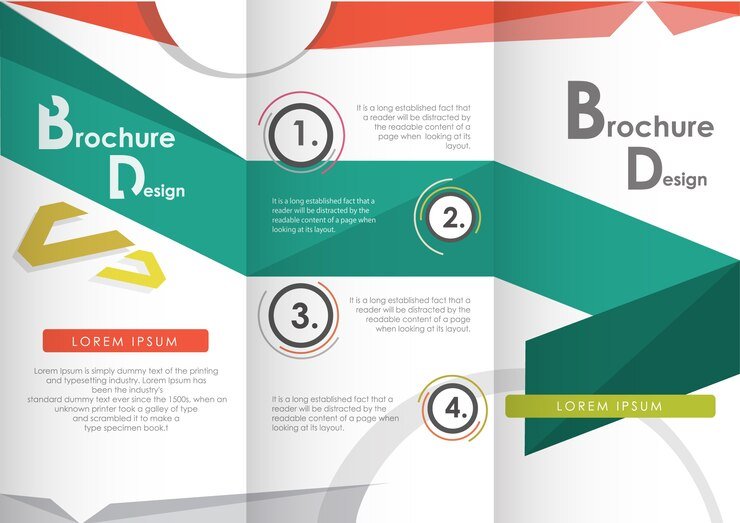
Catalog Designing
Catalog design is a crucial aspect of marketing that involves presenting products or services in a visually appealing and organized manner. Whether in print or digital format, a well-designed catalog can significantly impact a customer’s perception and buying decisions. Here’s a step-by-step guide for designing a catalog:
- Define Catalog Objectives
- Gather Content
- Set a Theme and Style
- Page Layout and Grid
- Typography
- Color Scheme
- Cover Design
- Section Organization
- Product Presentation
- Price and Offer Display
- Consistent Branding
- Catalog Size and Format
All kinds of packaging designs: (boxes, packets, pouches etc)
Packaging design is a critical aspect of product branding and marketing. Different types of packaging serve various functions, from protecting products to attracting consumers’ attention. Here are some common types of packaging designs:
- Folding Cartons
- Corrugated Boxes
- Rigid Boxes (Set-Up Boxes)
- Plastic Packaging
- Flexible Packaging
- Blister Packaging
- Tubes
- Labels and Sleeves
- Aseptic Packaging
- Molded Pulp Packaging
- Child-Resistant Packaging
- Luxury Packaging
Dyeline Making (Die making)
Die making, also known as dyeline making, is a process involved in the manufacturing of dies used for cutting, embossing, or stamping materials such as paper, cardboard, plastic, or metal. Dies are typically made from steel rule, wood, or other materials, and they are crucial in various industries, including printing, packaging, and manufacturing. Here’s a basic guide to the dyeline making process:
- Understanding the Design
- Material Selection
- Steel Rule Die (Flatbed Die
- CAD Design or Template
- Die Cutting Machines
- Quality Control
- Usage in Production
- Maintenance and Storage
- Customization
- Safety Measures
- Automation (Optional)
Magazines
Certainly! There are several magazines dedicated to various design disciplines, providing insights, inspiration, and the latest trends in the design world. Here are some notable design magazines that cover a range of design fields:
- Communication Arts
- Eye Magazine
- Print Magazine
- HOW Magazine
- AIGA Eye on Design
- Computer Arts
- Interior Design
- Dwell
- Architectural Digest
- Azure
- Frame
- Creative Review
- Wired
- Wired
- Graphis
- Digital Arts
Books
Certainly! There are numerous books that cover various aspects of design, ranging from graphic design and UX/UI design to design thinking and creativity. Here’s a list of highly recommended books in the field of design
- Graphic Design
- UX/UI Design
- Design Thinking and Creativity
- General Design
- Inspirational Design

Large format designs
Large format designs, commonly used in materials like flex and vinyl, are crucial for outdoor advertising, events, trade shows, and various promotional activities. These designs often involve creating visually impactful graphics that can be scaled up for large displays. Here’s a guide to designing for large formats:
- Understand the Purpose:
- Determine Size and Scale
- Vector Graphics
- High-Resolution Images
- Color Mode
- Contrast and Legibility
- Simplicity in Design
- Bleed and Trim
- Consider Viewing Distance
- Typography
- Testing and Proofing
- File Formats
- Creative use of Space
- Printing Techniques
Corporate Gifting:
Corporate gifting is a practice where businesses give gifts to clients, employees, partners, or other stakeholders as a gesture of appreciation, goodwill, or to mark special occasions. Thoughtful and well-chosen corporate gifts can strengthen relationships, enhance brand perception, and foster a positive working environment. Here’s a guide to corporate gifting
- Define the Purpose
- Know Your Recipients
- Budget Considerations
- Brand Alignment
- Occasions for Corporate Gifting
- Types of Corporate Gifts
- Ethical and Cultural Considerations
- Packaging and Presentation
- Delivery Logistics
- Compliance and Policies
- Feedback and Follow-Up
- Stay Professional
- Keep it High-Quality
- Wired
- Graphis
- Digital Arts
And all other printing related designs
Printing-related designs cover a wide range of materials and formats, each with its specific requirements and considerations. Whether you’re designing for business cards, banners, flyers, or other printed materials, here are some general tips and considerations:
- Understanding the Printing Process
- Bleed and Trim
- Resolution
- Color Consistency
- Typography
- Paper and Material Selection
- File Formats
- Proofreading
- Scalability
- Die-Cutting and Special Finishes
- Printable Area
- Test Prints
- Fold and Binding Considerations
- Barcode and QR Codes
- Packaging Design
- File Size
- Collaborate with Printers
Knowledge of printing machines
Printing machines encompass a diverse range of equipment designed for producing printed materials across various industries. The type of printing machine used depends on factors such as the printing method, the scale of production, the materials being printed, and the desired end result. Here’s an overview of some common types of printing machines:
- Offset Printing Machines
- Digital Printing Machines
- Flexographic Printing Machines
- Gravure Printing Machines
- Screen Printing Machines
- Wide Format Printers
- 3D Printers
- Screen Printing Machines
- Laser Printers
- Inkjet Printers
- UV Printers
- Heat Transfer Printers
- Pad Printing Machines
Color Theory
Color theory plays a crucial role in design, influencing how people perceive and respond to visual information. Designers use color to evoke emotions, create hierarchy, convey information, and establish a brand identity. Here are key aspects of applying color theory in design:
- Color Wheel and Color Schemes
- Contrast
- Hierarchy and Emphasis
- Branding and Identity
- Mood and Emotion
- Accessibility
- Consistency
- Color Harmony
- White Space and Neutrals
- Cultural Considerations
- Seasonal and Trend Considerations
- Seasonal and Trend Considerations
- Material and Print Considerations
- Typography and Color
Graphic Design for Digital Industry
Marketing & advertising graphic design
Graphic design plays a crucial role in marketing and advertising by visually communicating messages, creating brand identities, and influencing consumer perceptions. Here are key aspects of graphic design in marketing and advertising:
- Branding
- Logo Design
- Collateral Materials
- Advertising Campaigns
- Packaging Design
- Web and Social Media Graphics
- Infographics
- Poster and Banner Design
- Email Marketing Graphics
- Typography
- Photography and Imagery
- Responsive Design
- Color Psychology
- Interactive Design
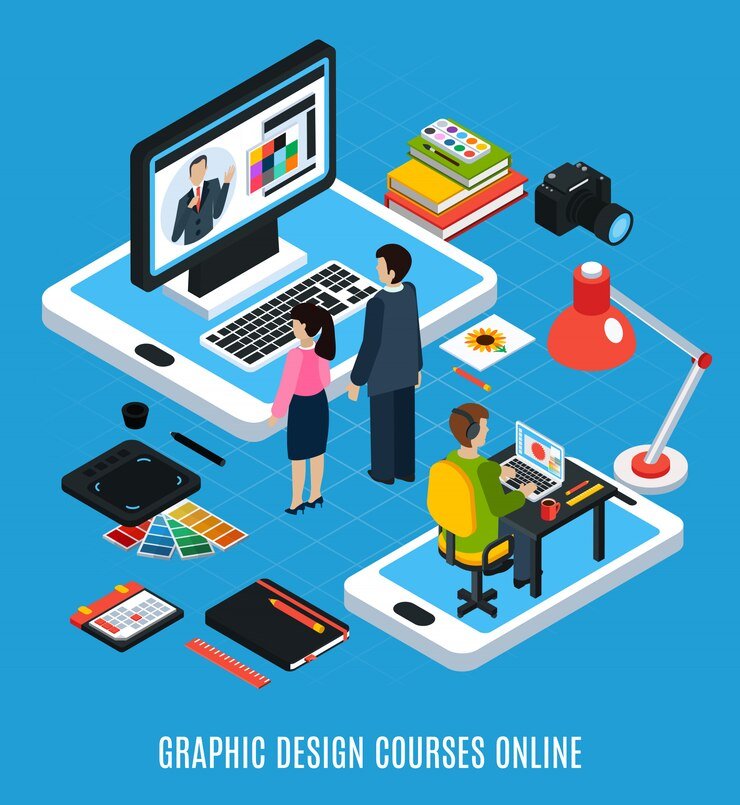
User Interface designs (UI Designing)
User Interface (UI) design focuses on creating visually appealing and user-friendly interfaces for digital products and applications. UI designers aim to enhance the user experience by designing interfaces that are intuitive, functional, and aesthetically pleasing. Here are key principles and considerations for UI design:
- User-Centered Design
- Consistency
- Hierarchy and Flow
- Simplicity
- Navigation
- Responsive Design
- Feedback and Affordance
- Typography
- Interactive Elements
- Accessibility
- Loading Times
- Error Handling
- Collaboration with UX Design
- Stay Updated with Design Trends
Photo Editing
Photo editing is a fundamental aspect of graphic design, allowing designers to enhance and manipulate images to create visually compelling graphics for various purposes. Whether it’s for digital or print media, photo editing in graphic design involves a range of techniques and tools to achieve specific design goals. Here are key aspects of photo editing in graphic design
- Image Enhancement
- Retouching and Restoration
- Background Removal and Replacement
- Compositing
- Texturing and Overlays
- Filter and Effects Application
- Color Grading
- Resize and Scaling
- Smart Object and Non-Destructive Editing
- Photo Manipulation
- Product Photography Enhancement
- Consistency Across Design Elements
- Print Considerations
- Client Feedback and Revisions
- Legal and Ethical Considerations
Mockup Designs
Mockup designs play a crucial role in the design and development process, allowing designers to showcase their work in a realistic and visually appealing manner. Mockups are essentially visual prototypes that give stakeholders and clients a preview of how the final product or design will look. Here are key aspects of mockup designs
- A mockup is a static or interactive representation of a design or product.
- It provides a visual context for understanding the layout, color scheme, and overall aesthetics.
- Tools for Creating Mockups
- Elements of a Mockup
- Realism and Context
- Client Presentations
- Feedback and Iteration
- Responsive Design
- Prototyping
- Accessibility Considerations
- Versioning
- Export and Handoff
- Collaboration
- Final Approval

Thumbnail creation
Thumbnail creation is a crucial aspect of graphic design, especially for online content where thumbnails serve as small, visually engaging representations of larger content such as videos, articles, or social media posts. Effective thumbnail design can capture attention, convey the content’s essence, and encourage users to click for more. Here are key considerations and tips for creating compelling thumbnails
- Clarity and Readability
- Branding
- Contrast and Color
- Thumbnail Size and Format
- Image Selection
- Mobile-Friendly Design
- Dynamic and Engaging Imagery

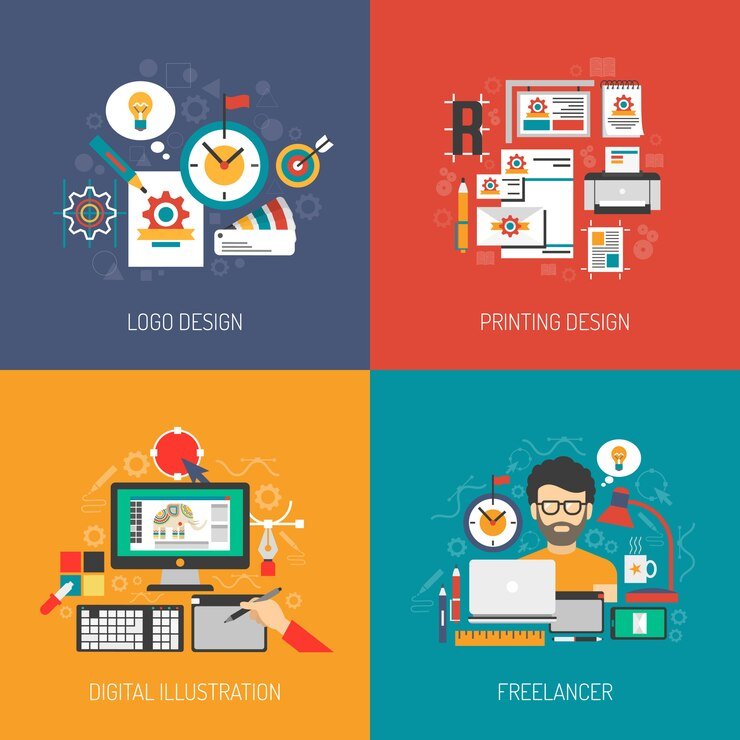
Icon creation
Icon creation is a specialized aspect of graphic design that involves designing small, simplified graphical representations of objects, actions, or concepts. Icons are commonly used in user interfaces, websites, applications, and various visual communication materials. Here are key considerations and tips for creating effective icons
- Simplicity and Clarity
- Size Considerations
- Grid System
- Limited Color Palette
- Iconography
- Pixel Perfect Design
- Avoid Text
- Scalability
- Accessibility
Graphic Designing Scope
As of my last knowledge update in January 2023, the field of graphic design has a broad and evolving scope. Graphic design is a dynamic and creative profession that involves visually communicating messages through various mediums. Here are key aspects of the scope of graphic design
- Motion Graphics and Animation
- Web and App Design
- Social Media Graphics
- Icon and Logo Design
- Education and Training
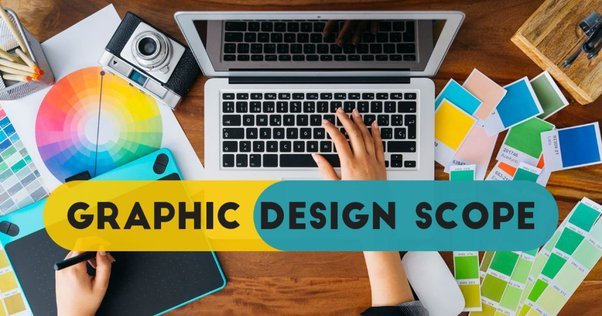
- Print and Digital Media
- Branding and Identity
- User Interface (UI) and User Experience (UX) Design
- Packaging Design
- Advertising and Marketing

Printing industry Designer
A designer working in the printing industry plays a crucial role in creating visually appealing and effective materials that will be reproduced in print. This role involves collaborating with clients, understanding printing processes, and ensuring that the final printed products meet quality standards. Here are key aspects of the responsibilities and skills associated with a designer in the printing industry
Logo Designer
A logo designer specializes in creating unique and impactful visual identities for businesses, organizations, or individuals. The logo is a key element of brand identity, representing the essence of a brand through a distinctive and memorable mark. Here are the key responsibilities and skills associated with being a logo designer:


Freelancer
A freelancer is a self-employed individual who offers services to clients on a project-by-project basis. Freelancers are typically skilled professionals in various fields, offering their expertise to businesses, organizations, or individuals. Here are key aspects related to freelancing:
- Client Acquisition
- Project Management
- Communication
- Scope Definition
- Negotiation and Contracts
- Self-Promotion
- Freelance Platforms
- Flexibility
- Self-Discipline
- Build a Strong Portfolio
- Professionalism
- Financial Planning:
- Continuous Learning
- Effective Time Management
Sell designs using online platforms
Selling designs online can be a rewarding venture, and there are various platforms where you can showcase and market your creative work to a global audience. Here are steps and tips for selling designs online
By strategically using online platforms, social media, and e-commerce tools, you can build a successful online presence for selling your designs. Consistency, quality, and effective marketing are key factors in establishing yourself as a successful online designer.

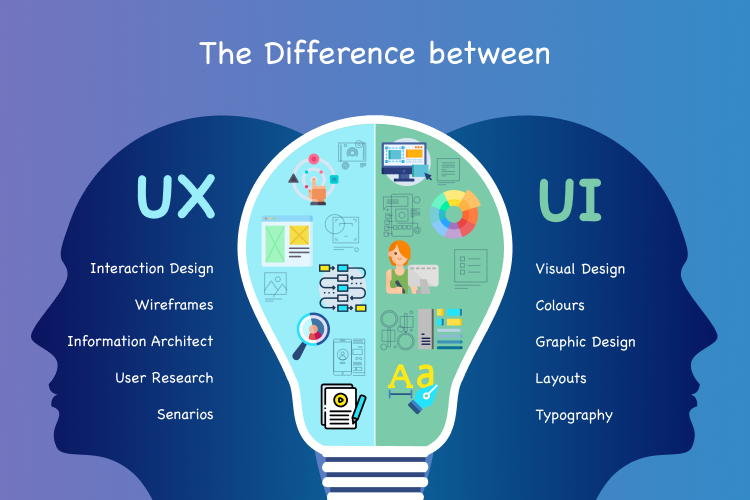
UI Designer
A UI (User Interface) designer is responsible for creating visually appealing and user-friendly interfaces for digital products, such as websites, mobile applications, and software. The primary focus of a UI designer is to enhance the user experience by designing interfaces that are intuitive, visually engaging, and aligned with the brand’s identity. Here are key aspects related to the role of a UI designer
UI designers play a crucial role in creating digital experiences that are visually appealing, easy to navigate, and meet the needs of users. The role involves a combination of creativity, technical proficiency, and a deep understanding of user behavior and design principles.
Photo Editor
A photo editor is a professional responsible for enhancing and retouching photographs to achieve a desired visual result. This role involves using various tools and techniques to improve the quality, composition, and overall appeal of images. Photo editors work in various industries, including publishing, advertising, photography, and digital media. Here are key aspects related to the role of a photo editor:
Photo editors play a crucial role in transforming raw images into visually stunning and impactful visuals. Whether working with professional photographers, in-house creative teams, or as a freelance photo editor, the ability to enhance and optimize images is key to delivering high-quality visual content.

Start your own Designing Service Business
Starting your own designing service business can be a rewarding venture, but it requires careful planning, creativity, and a solid understanding of the design industry. Here’s a step-by-step guide to help you kickstart your own designing service business
Starting a designing service business requires a combination of creative skills, business acumen, and effective marketing. By providing high-quality work and exceptional service, you can build a strong reputation and grow your business in the competitive design industry.
